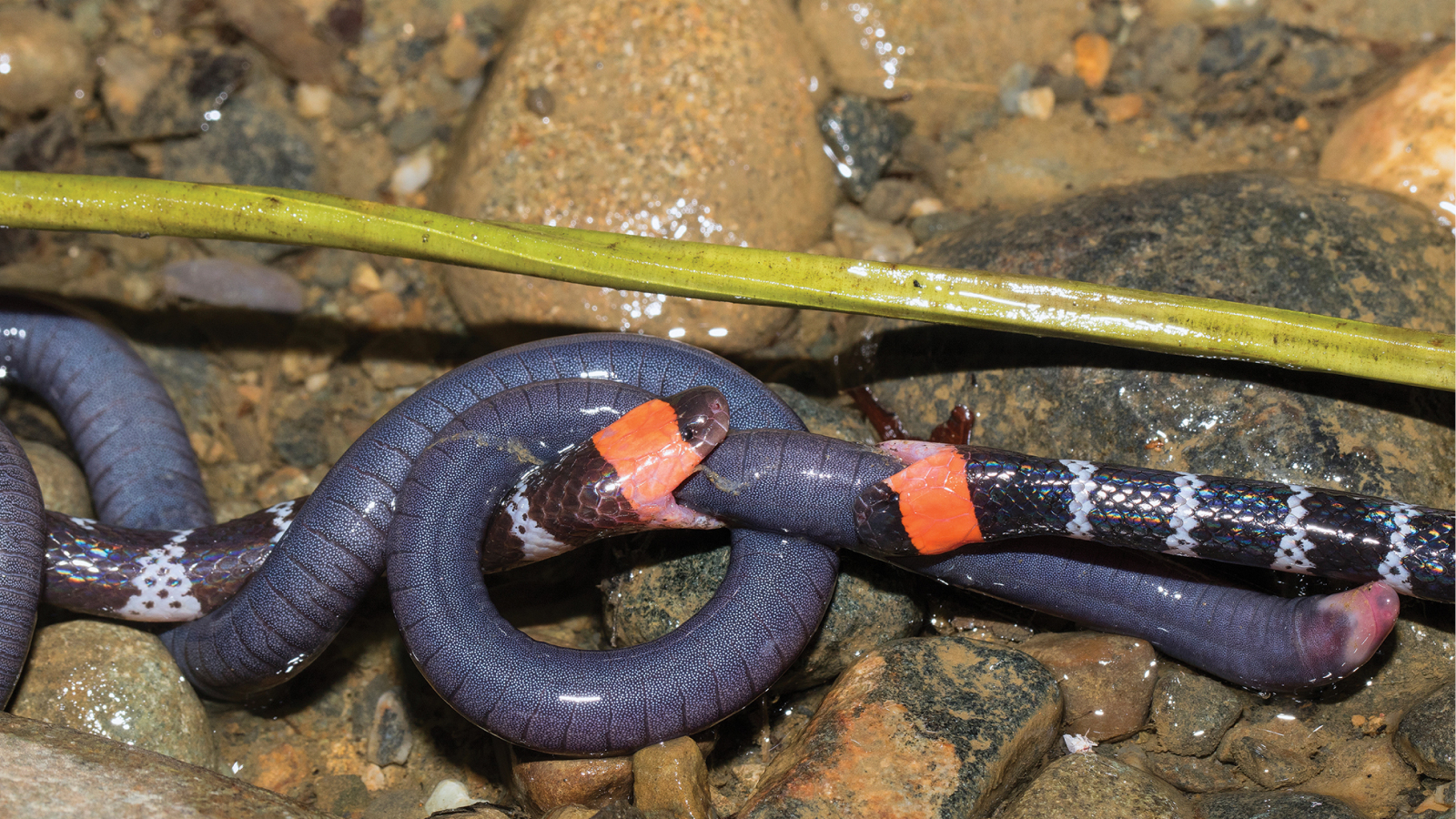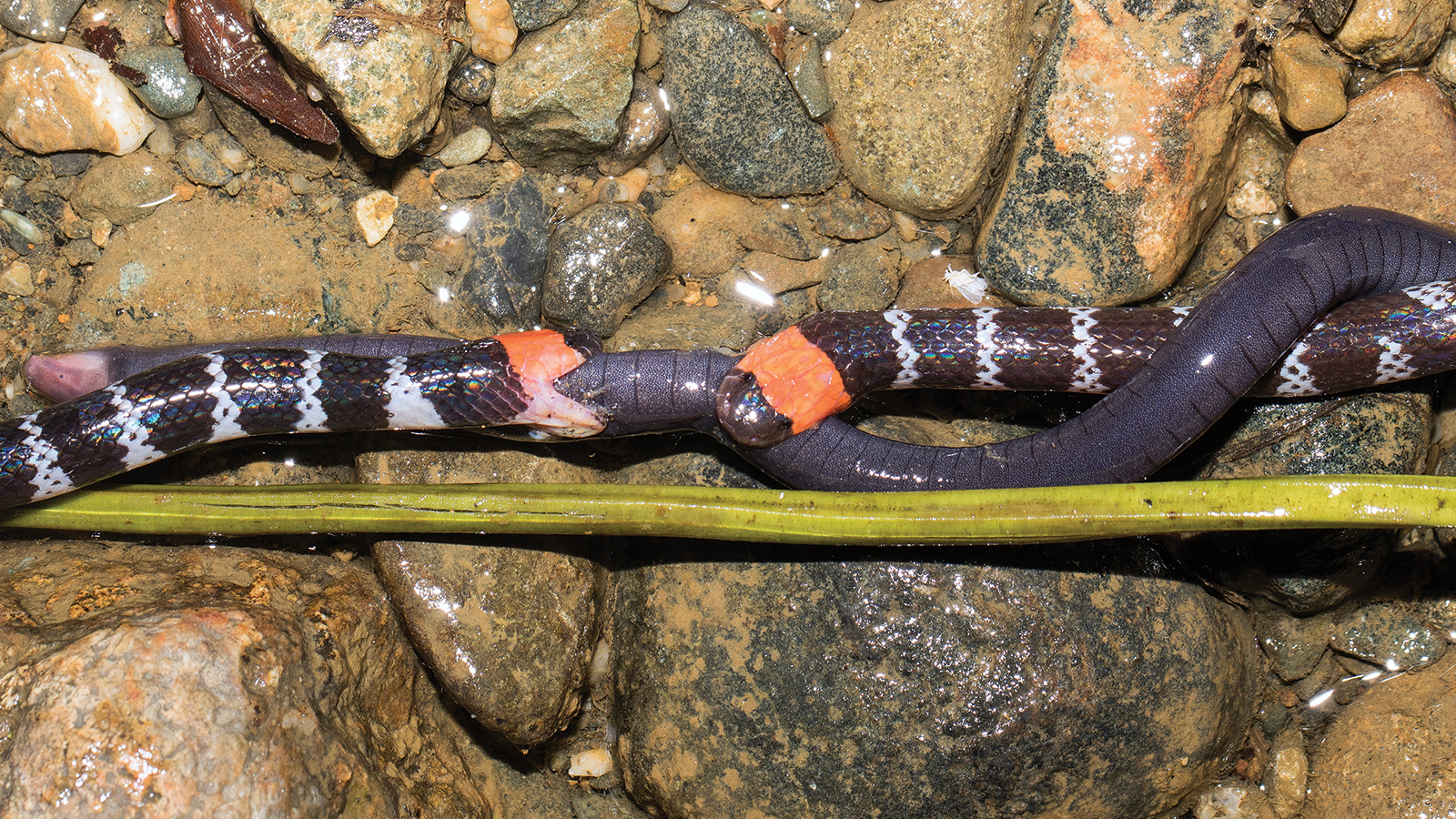Watch venomous snakes wrestling for wormlike creature in epic tug-of-war battle
First-of-its-kind footage captures two coral snakes fighting over a wormlike creature in western Colombia.
First-of-its-kind footage captures a rare tug-of-war battle between two venomous coral snakes competing for wormlike prey.
In the video, the two red-tailed coral snakes (Micrurus mipartitus) wrestle over a slimy caecilian — a limbless tropical amphibian — pulling back and forth to win the meal. This is the first time that food theft, known as kleptoparasitism, has been recorded within the venomous snake family Elapidae in the wild.
The observation was documented in a study published March 22 in the journal Herpetozoa.
"It was breathtaking because I knew it was a unique observation!" lead author Henrik Bringsøe, a herpetologist and previous chairman for the Nordic Herpetological Society, who witnessed the behavior, told Live Science in an email.
Related: Giant ball of Burmese pythons having sex discovered in Florida Everglades in record-breaking catch
Herpetologists stumbled upon the rare behavior while searching for amphibians and reptiles in the rainforest of western Colombia at nightfall. The battle had already begun when they arrived.
"We suddenly saw the two coral snakes in an energetic competition or combat for the prey which was a rather unusual amphibian called a caecilian looking like something between a worm and a snake," Bringsøe said.
Get the world’s most fascinating discoveries delivered straight to your inbox.
The footage shows the two coral snakes using a spinning maneuver while biting the caecilian, possibly to untwist the caecilian as it struggled to escape, according to the study.
According to the study, both snakes detected the same caecilian using chemoreception — a way of finding prey using their sense of taste and smell.
Previous research has suggested that some caecilian species have evolved resistance to the neurotoxins in the venom of Micrurus species. Scientists think this explains why the caecilian is seemingly unaffected by the snake venom after numerous bites to its flesh.
The encounter lasted 17 minutes before the winning snake slithered off with the caecilian. "We gave highest priority to not disturb them, which might well have spoiled the value of our observations," Bringsøe said.
Kleptoparasitism is reported across the animal kingdom, but it is most commonly observed in birds. For example, gulls tend to steal freshly caught shellfish from smaller shorebirds. "In captivity, where the space available is much more limited than in the wild, kleptoparasitism may be seen fairly often if several snakes are kept together," Bringsøe said.
However, reports of kleptoparasitism among snakes in the wild are rare and underreported. "Snakes can be very secretive and live hidden lives (as the coral snakes, in our case, do) which means that behavioral studies in the wild will be particularly difficult and time-consuming," Bringsøe said.

Elise studied marine biology at the University of Portsmouth in the U.K. She has worked as a freelance journalist focusing on the aquatic realm.
 Live Science Plus
Live Science Plus







